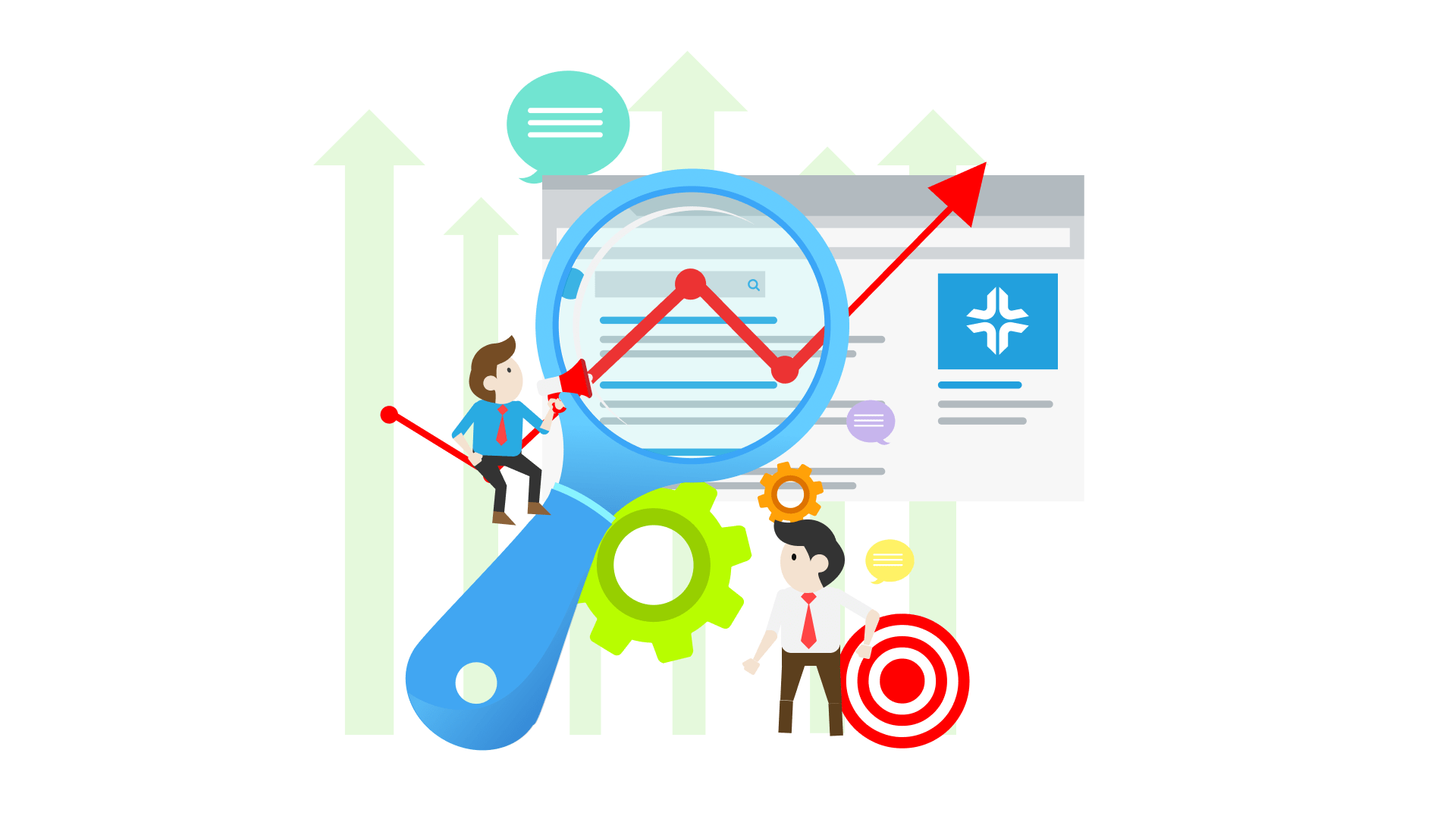
Home »
Leveraging Data Analytics for Resource Management in PSA
Learn how to optimize allocation, enhance project outcomes, and drive business growth effectively.
Overview of Data Analytics
Data analytics plays a crucial role in resource management by providing insights into resource allocation, utilization, and performance. It enables organizations to forecast demand, optimize resource allocation, and track resource utilization in real-time.
Data analytics also helps measure resource performance, apply predictive models for future resource needs, and drive continuous improvement initiatives.
By leveraging data effectively, organizations can enhance operational efficiency and effectiveness in resource management within a professional services automation (PSA) environment.

Demand forecasting
Demand forecasting is a critical aspect of resource management in professional services automation (PSA). It involves using historical data, market trends, and other relevant factors to predict future resource requirements accurately. By leveraging data analytics for demand forecasting, organizations can make informed decisions regarding resource allocation, capacity planning, and overall business strategy.
Demand forecasting starts with a comprehensive understanding of the factors that influence resource demand. This includes analyzing past project data, client requirements, market conditions, and industry trends. Data analytics employs various statistical techniques to forecast demand. Time series analysis, regression analysis, and predictive modeling are commonly used methods. Time series analysis examines past demand patterns to identify trends, seasonality, and other recurring patterns..
Effective demand forecasting requires integrating data from various sources. This includes project management systems, customer relationship management (CRM) tools, financial records, and external data sources. Demand forecasting should consider scalability requirements. Organizations must assess the potential growth of their client base, new projects, or expanding service offerings.
By conducting risk assessments and incorporating risk factors into forecasting models, organizations can account for uncertainties and develop contingency plans to mitigate their impact on resource management.
| Demand Forecasting in Resource Management | Elaboration of Key Concepts |
|---|---|
| Importance of Demand Forecasting | Demand forecasting is a crucial aspect of resource management within professional services automation (PSA). It involves utilizing historical data, market trends, and relevant factors to accurately predict future resource requirements. |
| Factors Influencing Resource Demand | A comprehensive understanding of the factors that impact resource demand is vital. This includes analyzing past project data, client needs, market conditions, and industry trends. |
| Data Analytics Techniques | Data analytics plays a key role in demand forecasting. Techniques like time series analysis, regression analysis, and predictive modeling are used to analyze data and forecast demand patterns. |
| Integrating Data Sources | Effective demand forecasting requires integration of data from various sources such as project management systems, CRM tools, financial records, and external data sources. |
| Scalability Considerations | Forecasting should consider scalability, evaluating potential growth in client base, new projects, and expansion of services to ensure adequate resource planning. |
| Risk Assessment and Contingency Planning | Incorporating risk factors into forecasting models helps organizations account for uncertainties and develop contingency plans to mitigate their impact on resource management. |
Resource allocation optimization
Resource allocation optimization is a crucial aspect of resource management in professional services automation (PSA). It involves strategically assigning resources to projects or tasks to maximize efficiency, productivity, and overall performance. By leveraging data analytics, organizations can make informed decisions regarding resource allocation, considering factors such as skill sets, availability, project requirements, and performance.
Resource allocation optimization begins with a thorough analysis of project or task requirements. This includes evaluating the specific skills, expertise, and experience needed to execute the work effectively. Data analytics allows organizations to assess resource availability accurately. By analyzing resource utilization rates, current workloads, and availability calendars, organizations can determine which resources are available and when.
Data analytics enables organizations to match resources skills with project requirements. By analyzing the skill sets, certifications, and past project experiences of resources, organizations can identify the best-fit resources for specific tasks. By analyzing current workloads and project timelines, organizations can distribute work more evenly among resources, avoiding resource bottlenecks or burnout. This ensures that resources can effectively manage their assigned tasks and maintain high-quality output.
Data analytics can be used for predictive modeling to optimize resource allocation. By applying algorithms and statistical techniques to historical data, organizations can forecast future resource needs and potential constraints.

Real-time resource tracking
Real-time resource tracking is a critical component of resource management in professional services automation (PSA). It involves monitoring and tracking the utilization, availability, and performance of resources in real time. By leveraging data analytics and integrated systems, organizations can gain immediate insights into resource allocation, identify bottlenecks, make informed decisions, and ensure optimal resource utilization.
Real-time resource tracking provides organizations with up-to-date visibility into how resources are being utilized. By integrating data from project management systems, timesheets, and other relevant sources, organizations can monitor the amount of time and effort spent by each resource on specific tasks or projects.
Real-time resource tracking enables organizations to proactively allocate resources. By monitoring the progress of projects, organizations can identify tasks or projects that require additional resources or may face resource shortages.
With real-time resource tracking, organizations can optimize resource scheduling. By analyzing resource availability, project timelines, and task dependencies, organizations can efficiently schedule resources for upcoming projects or tasks.
Performance measurement
Performance measurement is a vital component of resource management in professional services automation (PSA). It involves the systematic evaluation and tracking of key metrics to assess the performance of resources, projects, and the overall organization. By leveraging data analytics, organizations can gain valuable insights into resource productivity, project profitability, client satisfaction, and other performance indicators.
Performance measurement in resource management relies on defining and tracking relevant KPIs. These KPIs may vary based on organizational goals and industry specifics but commonly include metrics such as billable hours, resource utilization rates, project profitability, client satisfaction ratings, on-time delivery, and quality of work. These KPIs provide quantifiable measures to assess resource performance and project success.
By analyzing metrics such as billable hours, task completion rates, and project feedback, organizations can identify high-performing resources, evaluate their efficiency and effectiveness, and recognize their contributions. By tracking metrics such as project profitability, adherence to budget and timeline, client satisfaction, and deliverable quality, organizations can assess project success and identify areas for improvement. This analysis helps in understanding project performance drivers, addressing issues promptly, and enhancing project delivery.
By establishing benchmarks or industry standards for performance metrics, organizations can compare their performance against peers or internal targets. This comparison provides insights into areas of strength and areas that need improvement, driving continuous performance enhancement. Performance measurement includes assessing client satisfaction and feedback. By gathering and analyzing client feedback, organizations can understand client expectations, identify areas for improvement, and enhance service delivery. Satisfied clients are more likely to provide repeat business and referrals, contributing to business growth and success.
| Performance Measurement in PSA | Key Concepts |
| Importance | Systematic evaluation and tracking of key metrics to assess resource, project, and organizational performance. |
| KPIs | Define and track KPIs such as billable hours, resource utilization, project profitability, client satisfaction, on-time delivery, and quality of work. |
| Resource Assessment | Analyze billable hours, task completion rates, project feedback to identify high-performing resources, evaluate efficiency, and recognize contributions. |
| Project Evaluation | Track project profitability, adherence to budget/timeline, client satisfaction, and deliverable quality to assess project success and identify areas for improvement. |
| Benchmarking | Compare performance against industry standards or peers to identify strengths, weaknesses, and drive continuous improvement. |
Predictive analytics
Predictive analytics is a branch of data analytics that utilizes historical and current data to forecast future outcomes or trends. It involves applying statistical algorithms, machine learning techniques, and data mining methods to identify patterns, correlations, and predictive models from data sets. In the context of resource management in professional services automation (PSA), predictive analytics can be leveraged to make accurate predictions and informed decisions regarding resource needs, project outcomes, and business strategies.
Predictive analytics enables organizations to forecast future resource demand accurately. By analyzing historical resource utilization data, project requirements, market trends, and other relevant factors, organizations can build models that predict resource needs. These forecasts help in proactive resource planning, ensuring that the right resources are available at the right time to meet client demands.
It assists in capacity planning by projecting future resource requirements. Organizations can estimate the capacity needed to handle upcoming projects, identify potential bottlenecks, and make strategic decisions regarding resource allocation, hiring, or training. By analyzing historical project data, resource allocation patterns, project complexity, and other relevant factors, organizations can develop models that predict project success or failure. These predictions assist in risk assessment, proactive issue mitigation, and decision-making to ensure successful project delivery.
By analyzing historical revenue data, project pipelines, sales trends, and market conditions, organizations can predict future revenue streams. This information helps in financial planning, resource allocation, and business strategy formulation. Predictive analytics supports risk assessment and mitigation in resource management. By analyzing historical project data, resource performance, and external factors, organizations can identify potential risks and their impact on resource allocation, project outcomes, and profitability.
Continuous improvement
Continuous improvement, also known as continuous improvement process refers to the ongoing effort to enhance processes, products, services, and overall performance within an organization. It is a systematic approach that involves identifying areas for improvement, making changes, measuring outcomes, and making further adjustments to achieve incremental progress over time.
In the context of resource management in professional services automation (PSA), continuous improvement is essential for optimizing resource utilization, enhancing project delivery, and driving organizational success. Continuous improvement begins with identifying areas within resource management processes that can be enhanced. This may include analyzing resource allocation practices, project workflows, communication channels, performance metrics, or client satisfaction levels.
Once areas for improvement are identified, organizations can establish clear and measurable improvement goals. These goals should be aligned with organizational objectives, such as increasing resource utilization rates, reducing project turnaround time, improving client satisfaction, or enhancing resource productivity.Data collection and analysis play a crucial role in continuous improvement. Organizations should gather relevant data related to the identified improvement areas, including performance metrics, feedback, project data, and resource utilization statistics. By leveraging data analytics techniques, organizations can gain insights, identify patterns, and uncover opportunities for improvement.
| Continuous Improvement in Resource Management | Key Concepts | Process |
|---|---|---|
| Introduction to Continuous Improvement | Definition | Identify areas for improvement, make changes, measure outcomes, and make further adjustments over time. |
| Objective | ||
| Continuous Improvement in PSA | Enhancing Resource Utilization | Identify improvement areas: resource allocation, project workflows, communication, performance metrics, client satisfaction. |
| Optimizing Project Delivery | ||
| Driving Organizational Success | ||
| Establishing Improvement Goals | Goal Alignment | Set clear, measurable goals aligned with organizational objectives. |
| Specific Objectives | ||
| Performance Metrics | ||
| Data Collection and Analysis | Gathering Data | Collect relevant data: performance metrics, feedback, project data, resource utilization statistics. |
| Leveraging Analytics | ||
| Identifying Opportunities |
KEBS – PSA Software

KEBS, a professional services automation (PSA) software, leverages data analytics to enhance resource management in PSA. Here are the key features of KEBS that support data analytics and resource management:
- Project Management: KEBS project management module provides real-time data and analytics on project progress, resource allocation, and task completion. This enables managers to make informed decisions regarding resource allocation, identify bottlenecks, and optimize project timelines.
- Resource Tracking: KEBS offers real-time resource tracking capabilities, allowing managers to monitor resource utilization, availability, and workload. By analyzing this data, organizations can ensure optimal resource allocation, identify overutilization or underutilization of resources, and make adjustments to enhance efficiency.
- Financial Management: KEBS includes financial management features that capture data on project costs, revenue, and profitability. By analyzing financial data, organizations can gain insights into resource costs, project profitability, and revenue generation. This helps in making data-driven decisions on resource allocation, pricing, and project selection.
- Analytics and Reporting: KEBS provides robust analytics and reporting tools that generate insightful reports and dashboards. These analytics capabilities enable organizations to track resource performance, project profitability, and resource utilization trends. By analyzing these reports, organizations can identify areas for improvement, optimize resource allocation, and align resource management strategies with business objectives.

Conclusion
In conclusion, KEBS, a professional services automation (PSA) software, offers a powerful solution for resource management by leveraging data analytics.KEBS empowers organizations to gain deep insights into their resource utilization, project performance, and financial metrics. This enables them to proactively identify and address resource challenges, streamline workflows, and maximize productivity.
By leveraging data analytics within KEBS, organizations can effectively manage their resources, improve project outcomes, and achieve greater success in their professional services endeavors.
Take your organization to next level!









